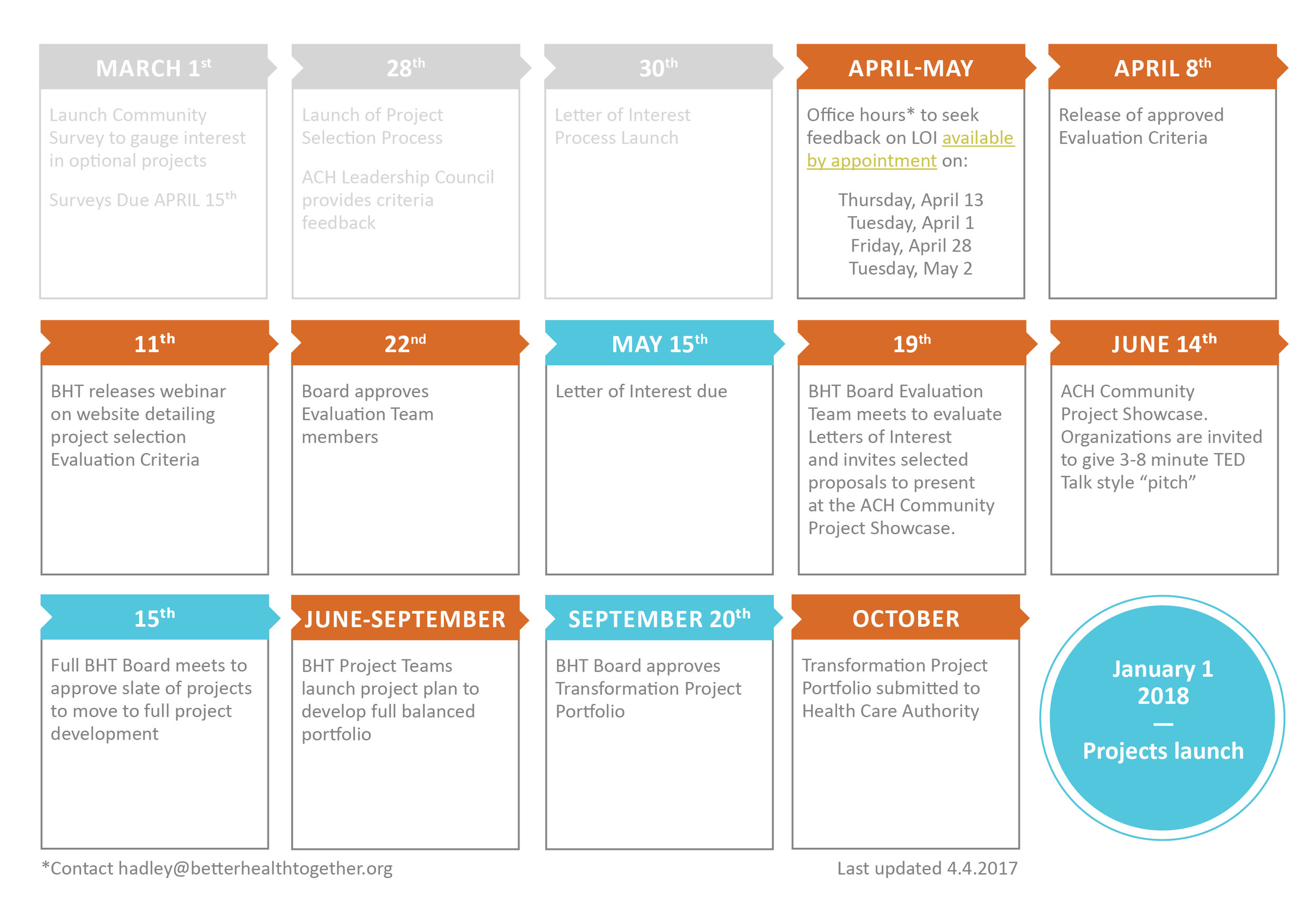As 2021 was coming to a close, BHT still had approximately $1.5 million of IMC incentive funds to allocate. At the September BH Forum, partners discussed how they would like to see us use the IMC funds over the next two years. At the November Board meeting, the Board approved allocation for the remaining IMC funds toward behavioral health initiatives in 2022-23. Five categories of potential initiatives have been identified based on the September Behavioral Health forum (BH Forum) and prior discussions about behavioral health needs for our region. The specifics of initiatives and use of funds will be designed collaboratively with providers and impacted individuals.
Background
In 2018, the BHT region elected to become a “mid-adopter” of Integrated Managed Care (IMC), which brought payments for behavioral health care under Medicaid managed care contracts. Because we chose to adopt early, the HCA gave the region $8.2 million in incentive dollars.
In 2018, BHT convened our behavioral health providers to support the IMC transition and invested $3.1 million in IMC capacity building.
We continue to gather partners as the BH Forum after IMC. The forum includes our behavioral health and integrated primary care partners, the Spokane BH-ASO, managed care organizations (MCOs), the state Health Care Authority (HCA), and other local organizations.
In 2020, the BH Forum focused on addressing challenges emerging from COVID, especially the transition to telehealth. Later in 2020 and into 2021, we supported investments in workforce issues identified by the forum partners. We invested $3.6 million in behavioral health pilot programs, including criminal justice, workforce support, telehealth, and broadband.
2022-2023 initiatives
At the September BH Forum, partners discussed how they would like to see us use the IMC funds over the next two years. Based on their initial recommendations, the BHT Board approved allocating the remaining $1.5 million in IMC funds toward behavioral health initiatives in 2022-23. The Board allocated $300,000 for BHT staff support during 2022-23 (category #4 below). The rest of the funds will be allocated by collective decision-making by the BH Forum members.
The September forum and prior discussions about behavioral health needs for our region informed the following 5 categories. The specifics of initiatives will be co-designed in 2022-23 with providers and impacted individuals guiding the interests and needs and collaborating in participatory budgeting.
Initiative Categories
1. Workforce Retention & Expansion
The Need: The region faces a severe and increasing workforce shortage—this category supports behavioral health agencies in workforce retention and expansion.
Based on initial conversations, may include:
- Loan forgiveness pilot
- Scholarships to complete BH education, such as BIPOC/LGBTQ workforce scholarship
- Continued BH Supervision support, especially for newly licensed BH agencies
- Other projects or initiatives as designed by BH Forum partners
2. Training & Education – Peers & CHWs
The Need: Increased training opportunities to expand workforce through Certified Peer Counselor (CPC) training specific to our region and cross-training CPCs & Community Health Workers (CHWs).
CPC/CHW cross-training – to be designed, may include:
- Networking sessions
- Joint training sessions in supplemental skills (MI, ACES, WRAP, etc.)
- Stipends for participants
- Additional offerings of CPC and CHW training sessions in our region
3. Training & Education – EBPs
The Need: Support for ongoing clinician training and clinical integration following training to increase consistency in evidence-based practice (EBP) understanding and use across the region.
Organizations are currently paying individually for training & implementation, which is expensive – this would support regional-level training on evidence-based practices (EBPs) based on WAC requirements and EBPs prioritized by partners.
4. Staffing – Network Administrator/Program Manager
The Need: Increase administrative capacity for providers and help them build capacity internally to navigate state-level hurdles to workforce and funding, as well as supporting BH Forum administration.
- Bureaucracy navigation support (agency licensure, DOH credentialing, NPI, MCO rostering, Identifying & supporting application for outside funding (loan forgiveness, education, training scholarship, etc.)
- VBP contracting readiness & support (identifying training and/or providing support)
- Retention and recruitment support (e.g., building agreements for the length of service)
- Staffing and administrative support for the Behavioral Health Forum, including facilitation, communication, and administering release of funds, contracts, reporting, and evaluation
5. Emerging Opportunities Funds
The Need: Allows us to adapt to emerging opportunities & requests from partners, community, and state.
Examples of potential emerging work:
- Adapting to changing the HCA approaches with Waiver extension and renewal, including BH/PC Integration Pilot in 2022
- Facilitation & support for community initiatives, such as University of Washington youth integration EBPs
- Emerging workforce initiatives, such as supporting Spokane Falls Community College (SFCC) BA program stand-up


